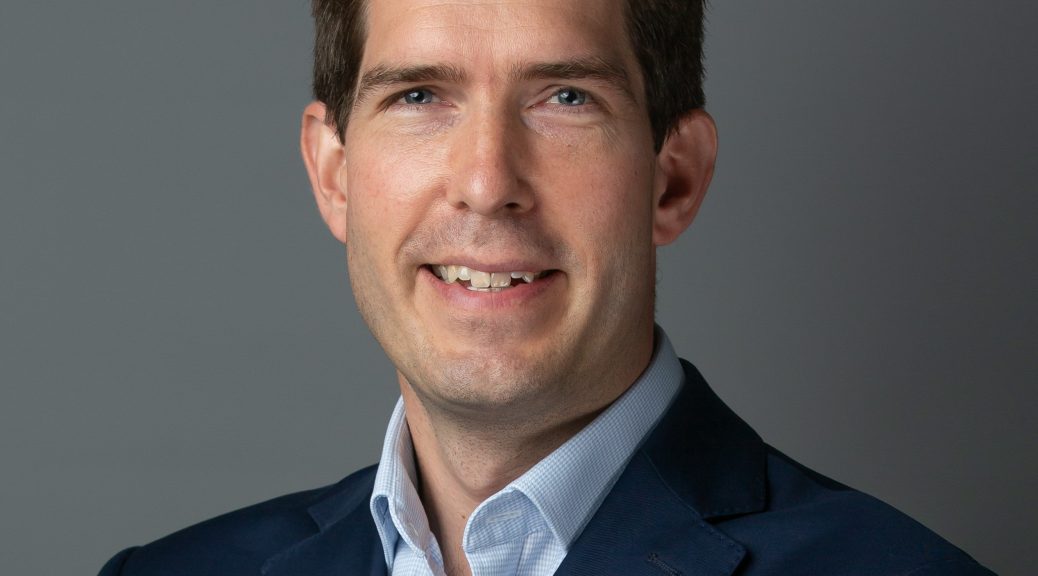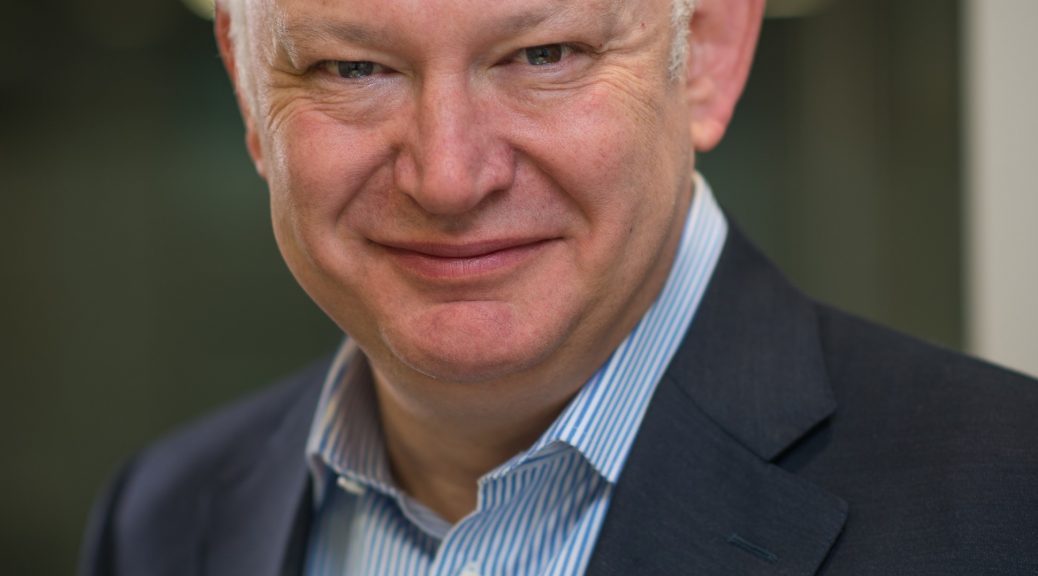
When discussing his fondest childhood memories, you certainly don’t expect Sainsbury Management Fellow James McMicking to recount tales of spending hours (and hours) sitting and watching diggers go about their work to build the M25. For James, it was these hours, plus a ‘traumatic’ incident watching his engineer uncle disassemble and incorrectly reassemble his parents’ broken washing machine at the tender age of 3, that was the start of his journey into the world of engineering. And what a journey it has been. Since these early days, James has had a passion for all things mechanical. It led him to study engineering at university, but it was the completion of an MBA via a Sainsbury Management Fellows scholarship that took his career to new heights (literally) as Aerospace Technology Institute’s Chief Strategy Officer. This is James’ story…
Where my passion for engineering began
Faulty washing machine aside, I’ve always had a knack for mechanical things. Even at an early age my parents were convinced that I’d become an engineer! I loved seeing machines in action. That’s when I’d be at my happiest and this passion endured as I grew up, with my thirst for knowledge seeing me gravitate towards mathematics, physics, and sciences.
It was the clarity of these subjects that appealed to me, and with an interest in sports and racing cars, there were clear signs that pursuing an engineering degree would be the natural next step for me after leaving school.
It was at the age of 15 or 16 that I started thinking seriously about studying engineering at university. I visited engineering departments and got a real buzz seeing what I could be involved in as an engineer. That grabbed me. The prospect of developing products and solving problems was something I got excited about. I could have an impact on the world and make my mark as an individual, so needless to say I was sold.
Talking to universities and graduates cemented my decision, and I was off. Studying for an engineering degree was a valuable and exciting time for so many reasons, a highlight of which was leading Bath University’s Formula Student team.
From watching diggers to building them
During my degree, I landed a one-year internship at JCB thanks to its sponsored undergraduate programme. I was back in my spiritual home but no longer was I simply watching diggers, I was building them! My time at JCB didn’t just help my progression as an engineer, for the first time, I began to learn how engineering businesses were run as well as what the job of an engineer is.
I’m very grateful for my time at JCB, I had the chance to be involved in so many aspects of engineering, from design through to manufacturing, testing and development, yet it was my interest in working on higher performance products that saw me move on to Ricardo Plc.
My time globetrotting as an automotive engineer
My time at Ricardo opened up a whole new world of opportunity. I was able to develop as an engineer and get amid lots of exciting, industry-leading work as part of its driveline transmissions business in the Midlands, not to mention travel all over the world.
Working internationally at Ricardo, I saw how well-regarded British engineers were and what made us different. I was lucky enough to get some real variety in this regard, working across Europe, North America, India, China and Korea. Besides seeing some amazing places, working with people from different cultures with different educational backgrounds showed me new ways of thinking and taught me a lot about working internationally that was important to getting things done.
I worked on many thrilling projects at Ricardo. Memorable experiences included testing the 550 hp Ford GT through the streets of Detroit to pushing hot-hatches to their limits at race circuits in France to diagnose transmission faults. There were certainly times when I was thrown in the deep end by the company and still expected to impress challenging clients. These were often the most important development experiences for me and when you grew the most.
The moment I hit my career crossroads
Driving and testing cars and working on various engineering projects around the world was an amazing experience and I became a specialist at Ricardo and progressed in many aspects of my job as an engineer, but I started to develop a new craving. I wanted to extend my role on the business side. At this stage, I was managing projects, leading and managing teams of engineers across the firm. I was interacting more and more with customers, which I enjoyed, and with this, I hit something of a crossroads.
I became particularly interested in the strategy behind the business, the markets we were working in, the competitors we were up against, and the decisions the management took and what made commercial sense or not.
My curiosity grew more and more. I asked myself what it took to run an organisation, how they built the business into the global player it had become, and how they would progress further. I had always been encouraged to develop leadership qualities, and always thought that one day I could be a leader of a business myself, but I needed more than my experience and skills as an engineer to achieve this. If I was to make the most of my potential, it would not be by continuing in the current role at Ricardo. I could change direction or keep doing what I was doing and build a long, and of course successful, career at Ricardo. After much thought, I decided that it was time for a change and that business education would be my catalyst.
There are so many options for getting a business education, and this can be daunting for engineers looking to unlock their potential by gaining business skills that support their engineering experience and qualifications. You can study part-time, go to a top business school, or go to a mainstream university that offers MBAs at a much lower cost.
For me, a full-time MBA made perfect sense. With a full-time MBA, I could give myself the time, space and focus to study how I learn best. It is not easy deciding to take that leap. It is of course costly, and as a successful and experienced engineer, potentially, there is a lot to lose. You must think about this, consider how much savings you have, and how much debt it could leave you with. But remember, there is so much more to gain, especially with the various sources of funding accessible to those wanting to do MBAs. This brings me to the Sainsbury Management Fellows.
The day I discovered SMF made pursuing an MBA even more possible
Discovering Sainsbury Management Fellows (SMF) changed my outlook and made pursuing an MBA a stronger possibility than ever before. I did endless hours of research and spoke to others within the industry before being led to SMF by the Royal Academy of Engineering.
Sainsbury Management Fellows’ scholarships offered the perfect opportunity to accomplish my career goals. The scholarship supports engineers who are passionate about engineering and technology and want to get a business education so that they can take up leadership roles.
I applied for the scholarship and was pleasantly surprised by the interview process. The interview was not a daunting formal experience as I anticipated. Instead, part of the event was an informal gathering with other scholarship applicants who all had interesting stories to tell and views to share about their careers. Then there was a personal interview with an assessment panel, and I discovered so much more about the benefits of an MBA from the people who had been to business school themselves. It was an enriching experience.
The assessment also involved presenting a real work project, so I shared a piece of work that I had done at Ricardo – it was great to have a deep technical discussion engineer to engineer. We talked through my logic for pursuing a business degree and discussed how I planned to use my newfound skills once I emerged at the other side of an MBA.
I had received two offers, one from London Business School and the other from Kellogg School of Management. The latter was costlier, but Kellogg had a special appeal for me. It offered a combined degree – two for one so to speak – with an MBA and a Master’s in Engineering Management that focused on business and innovation. Attending Kellogg would allow me to live in the US and immerse myself in a different culture, something I relished doing at Ricardo.
I was fortunate to make it through the process and be awarded the SMF scholarship. It gave me the freedom to study away from home and pursue career opportunities post-MBA with less debt.
Working hard and playing hard at Kellogg
Chicago-based Kellogg School of Management was a special place. The high energy environment and feel-good culture meant you worked hard but also played hard, and I relished that it would challenge me in so many ways, not just academically. Students were encouraged to get out and take risks on a personal front, and that’s something I have taken with me even now, years after graduating.
Living in the US was another experience that would not have been possible at that stage of my life without doing an MBA. I met, conversed and interacted with people from different backgrounds and industries, and this rounded out my view of the world. This helped me think a little differently and act a little smarter.
Thanks to Kellogg (and of course the SMF scholarship that made it possible) I achieved more than an MBA. I developed the confidence to engage in and challenge business strategy and management practices. I now have the vocabulary and insights I did not have before by doing my MBA. And I can honestly say I would not have gone into management consulting without it. The thinking space an MBA afforded me was also valuable. For once I had the time and space away from a busy day job to consider a broader range of careers and take my next step with confidence and clarity.
My status as a Sainsbury Management Fellow and Kellogg alumnus has given me the support I need, even now, years after doing my MBA. You find out quickly who else has done an SMF- sponsored MBA or attended Kellogg, especially with networks like LinkedIn. Let’s just say, if you get a message from a fellow Kellogg alumnus or an SMF, you respond!
Now back to my passion for engineering and technology
After graduating from Kellogg, I worked in management consulting for three years to further extend my learning experience. That was an excellent way to rapidly acquire experience solving a variety of business and commercial problems. It also ensured I made the switch from pure engineer – I had gone from fixing transmission designs to fixing business strategies, processes and organisations as part of very high-performance teams. But I had an overwhelming urge to get back to my passion for engineering and technology and put my technical past together with my newfound business acumen.
Shortly after this realisation, I joined a small team to establish the Aerospace Technology Institute (ATI), a not-for-profit organisation created in 2014 half funded by the government’s Department for Business and half funded by the aerospace industry.
With annual combined government and industry funding totalling £300 million to spend on world-class R&D programmes and promote transformative technology within the aerospace sector, the ATI and the work it does was a real game-changer for the UK. As one of the founding members of the Executive Management Team, I was so thrilled and considered myself so fortunate to be doing something so significant for UK industry and engineering.
Unlike most start-ups, the ATI was fortunate to have solid and long-term funding to focus on delivering to the needs of the sector. To date, we have been instrumental in encouraging industry collaborations to the UK in some of the biggest global aerospace programmes that will lead to more sustainable commercial aircraft in the future. Our partnerships with businesses interested in doing R&D in the UK has created significant momentum towards achieving this goal and it has been the foundation of so many fantastic projects. We are encouraging investment in technology research and aerospace like never before and giving the UK leadership, competitiveness and even more business.
We recently created project FlyZero, a ground-breaking initiative bringing some 90 secondees and contractors into the Institute to research the potential of future zero-emission commercial aircraft in just 1 year. The ATI is part of the government’s Jet Zero Council, with the ATI’s FlyZero initiative seen as instrumental to the council’s future zero-emission strategy which ultimately aims to lead the world in zero-carbon emission aircraft with exciting and radical technologies. The initiative is unique in how it is harnessing the best of UK industry and Academia in a way traditional research agencies elsewhere don’t. Our FlyZero initiative represents a thrilling future for the UK and its place in the wider, global aerospace sector.
Every opportunity starts with a conversation
If I were to advise other engineers, I would say, start having conversations with people from different career backgrounds. I was headhunted for the ATI role having been recommended by someone I had met 18 months before the opportunity arose. Building relationships is important – you never know what might arise from these connections further down the line.
If you are wondering whether an MBA is right for you, remember that studying for an MBA is more than a qualification. Business school is the ideal place to explore ideas without fear of failure; gain the confidence to progress in your career; engage with and sometimes challenge the way things have always been and lead from the front to change practices for the better.
Having a good mix of engineering and business skills in your job is more beneficial than many give credit for. As a passionate engineer, I am very tempted and often guilty of getting drawn into the technology and spending days learning about it. The beauty of blending engineering with business is that you comprehend what a piece of technology means in terms of how difficult it is to deliver but also how it can be exploited. You will be able to determine the impact it could have, and then translate that into a business impact, an economic impact, and a societal impact – that is a powerful thing in any organisation or industry.
Engineers who are a little further along in their decision to study an MBA should reach out to Sainsbury Management Fellows and the Royal Academy of Engineering to learn more. Through SMF, you can not only get funding to pursue an MBA but get support from people like me throughout your journey. I have met and connected with many people during my time as a Sainsbury Management Fellow, helped with scholarship applications on the interview panels and mentored young engineers. There is nothing more rewarding than talking to young people about their ideas and progression and helping them to make their career-defining decisions.
The SMF MBA Scholarship
If you are a professional engineer considering an MBA as a stepping-stone towards a business leadership career, visit our MBA scholarship application page, you could be awarded a £50,000 scholarship.







 The answer to this question very much depends on your MBA starting point. If you are studying an Executive MBA and it is part of your firm’s career plan for you, then naturally you will be aiming to stay with your employer on graduation, especially if they are financing or sponsoring part of your MBA. However, professionals who do full-time MBAs have to think about whether to seek a new role or return to their employer after graduation. Often this decision is made at the start of their MBA journey, not the end, although occasionally the answer changes.
The answer to this question very much depends on your MBA starting point. If you are studying an Executive MBA and it is part of your firm’s career plan for you, then naturally you will be aiming to stay with your employer on graduation, especially if they are financing or sponsoring part of your MBA. However, professionals who do full-time MBAs have to think about whether to seek a new role or return to their employer after graduation. Often this decision is made at the start of their MBA journey, not the end, although occasionally the answer changes.












 Tired of paying over-the-top rates for poor service, bad communication, and a total lack of market strategy? It might be time to switch—your chief executive, that is.
Tired of paying over-the-top rates for poor service, bad communication, and a total lack of market strategy? It might be time to switch—your chief executive, that is.


